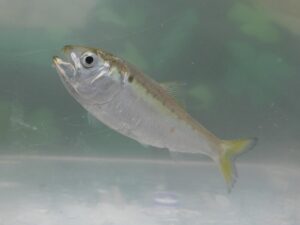The striped bass spring migration has come to a screeching halt for now. There has been no evidence of any significant movement north in the past week. It seems that our unseasonably cold spring weather is what has slowed these fish in their annual trek into our waters.
Last season at this time we had warmer weather bringing higher water temps and an abundance of pogies — more formally, these are Atlantic menhaden, a species of fish in the herring family — along the coast from New Jersey to Buzzards Bay. This made for an early robust arrival of striped bass into our area. It’s looking like that pattern may not duplicate itself this season, although a sudden change in our weather could get things percolating again rather quickly.

The striped bass rules and regulations have been set for this coming season by the Mass. Div. of Marine Fisheries; they are mostly unchanged for the recreational side of the fishery, with a reduction in quota for the commercial side.
Size and bag limits — the number of fish you’re allowed to keep in a day — are the same as last year: Recreational fishermen may keep one fish per day in a slot size of 28 to 31 inches. That’s a really tight slot, and you know if you read this column last season that my concern is that it increases the need for releases — and if the fish aren’t handled with care, that leads to mortalities.
Commercially, the bass must be a minimum of 35 inches to be harvestable. The commercial quota this year is 683,773 pounds, which represents a 7-percent reduction in the allowable harvest.
With the fish moving slowly in our direction, anglers have time to study up on the rules. It’s interesting to read the wording straight from the Mass. DMF because it reveals the concerns about proper measurement, landing, and handling of striped bass:
“Striped bass are measured from the tip of the snout or jaw (mouth closed) to the farthest extremity of the tail. The discard of dead legal sized striped bass is unlawful. The practice of high-grading, whereby legal sized striped bass are released in favor of larger fish caught subsequently is unlawful. Accordingly, it is also unlawful to keep a striped bass alive in water by attaching a line or chain to the fish (stringer) or placing it in a live well or holding car. Striped bass must be kept whole, meaning the head, tail, and body remain intact. Only evisceration is allowed. Permitted for-hire vessels may fillet striped bass for their customers. All recreational anglers are required to use inline circle hooks when fishing for striped bass with whole or cut natural baits, except when fishing with a natural bait attached to an artificial lure (e.g., tube and worm). The use of non-lethal devices to remove striped bass from the water is required; gaffing striped bass is prohibited.”
Bluefish rules will be the same as last year’s: there is no size limit, and there’s a three-fish bag limit — unless you are on a boat for hire, in which case the bag limit increases to five.
For winter flounder there is still a 12-inch minimum and an 8-fish bag limit. The great flounder fishing we used to enjoy here in the spring and early summer seems to be a thing of the past. I blame the increased numbers of cormorants and seals in our harbor. And the fluke or summer flounder, for reasons unknown, have stopped coming this far north. Nantucket Sound seems to be the farthest north they’ve come for the past 10 years.
For those of us on the Outer Cape, it’s got to be all about striped bass, bluefish, and mackerel if we want to fish close to home.



